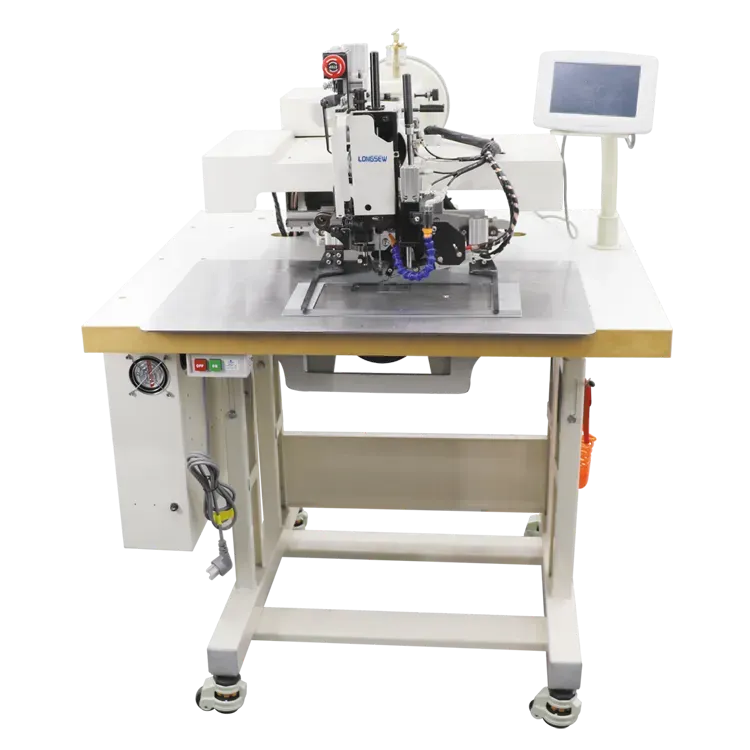sewing thick material on sewing machine
Sewing Thick Material on a Sewing Machine Tips and Techniques
Sewing thick materials, such as denim, canvas, leather, and multi-layered fabrics, can be a daunting task for many sewing enthusiasts. However, with the right techniques, tools, and a little patience, you can achieve professional-looking results. This article will guide you through some essential tips and tricks for sewing thick materials on a sewing machine.
Choosing the Right Sewing Machine
First and foremost, it's crucial to have the right sewing machine for handling thick fabrics. While many basic models may struggle with heavy materials, look for machines specifically designed for heavy-duty sewing. These machines typically have a stronger motor, a heavier presser foot, and a more robust feed system, making them better suited for tackling thick fabrics.
Selecting the Right Needle
Choosing the right needle is vital when sewing thick materials. A universal needle may not penetrate dense fabrics effectively, leading to skipped stitches or broken needles. Instead, opt for a heavy-duty needle, often labeled as “jeans” or “denim” needles. These needles have a stronger shaft and a sharper point designed to handle the unique challenges posed by thick layers.
Using the Correct Thread
When working with thick materials, it’s crucial to select a thread that matches the task at hand. Polyester or heavyweight thread is often recommended for sewing heavy fabrics because of its strength and durability. Avoid cotton thread for thick materials, as it may break under tension.
Preparing Your Fabric
sewing thick material on sewing machine

Proper preparation of your fabric can make a significant difference when sewing. Pre-wash your fabric to eliminate any shrinkage, and iron it well to remove wrinkles. This ensures that the layers lay flat and are easier to sew. If you’re working with particularly slippery materials such as leather, consider using clips instead of pins to hold the fabric in place, as pins can create holes and may slip out easily.
Adjusting Your Machine Settings
Before you start sewing, take a moment to adjust your sewing machine settings. Increase your stitch length; a longer stitch is less likely to break in thick materials. Additionally, depending on your fabric, you may need to adjust the tension. Test on a scrap piece of fabric first to determine the best settings for your project.
Using the Right Foot
The presser foot on your sewing machine also plays a crucial role when working with thick materials. Consider using a walking foot, which helps feed multiple layers of fabric evenly through the machine. Alternatively, a Teflon foot is ideal for slippery materials as it glides over the fabric surface without sticking.
Sew Slowly and Steadily
When sewing through thick fabrics, it's essential to take your time. Slow, steady sewing allows the machine to handle the fabric without getting jammed or creating uneven stitches. If you encounter thick seams, such as where multiple layers join, lift the presser foot and manually guide the fabric over these bumps to prevent skipping stitches.
Conclusion
Sewing thick materials can be a rewarding experience, allowing you to create beautiful and durable items. By choosing the right machine, needle, and thread, adjusting your settings appropriately, and taking care with your fabric, you can overcome the challenges posed by heavy fabrics. Remember, practice makes perfect! With patience and perseverance, you'll find that sewing thick materials can become an enjoyable part of your crafting journey. Happy sewing!
-
Leather Sewing Machine: The Industrial Standard for Tough MaterialsNewsJul.18,2025
-
Sail Making Machine: Heavy-Duty Stitching for Industrial and Marine NeedsNewsJul.18,2025
-
Sling Sewing Machine: The Backbone of Heavy-Duty FabricationNewsJul.18,2025
-
Leather Sewing Machine: Precision for Heavy-Duty StitchingNewsJul.18,2025
-
Big Bag Sewing Machine: Powering the Future of Bulk PackagingNewsJul.18,2025
-
FIBC Sewing Machine: Essential Equipment for Bulk Bag ProductionNewsJul.18,2025
-
Heavy Duty Leather Sewing Machine: A Must-Have for Professional LeatherworkNewsMay.28,2025





























